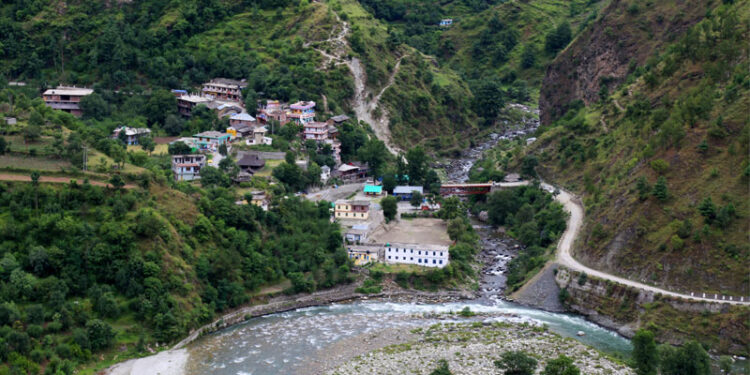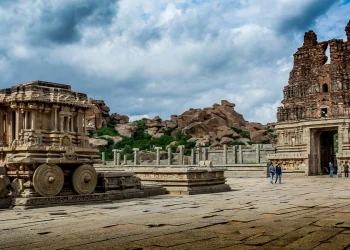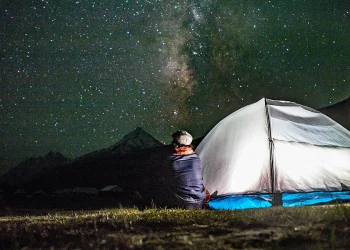(By Imtiaz Ullah) I have explored almost the length and breadth of Himachal and my first visit to this quaint “hidden gem” was in the year 2012. At that time there were a handful of travellers who would know about Tirthan and was aptly called “Himachal’s best kept secret”. However, recently this magical valley has seen a surge of travellers including adventure enthusiasts, trekkers, and people preferring solace and a place to unwind.

When I first visited Tirthan in 2012, I met Mohan Thakur – a native of Gushaini. I stuck a conversation with him and conversation turned into long talks. He became my companion and guide throughout my stay. Both of us had one thing in common – our love for mountains.
Now after six years, I have developed a strong friendship with Mohan. During all my subsequent visits to Tirthan, Mohan has always been my host.
Mohan is an avid mountaineer and has scaled many mountains of height above 6000 metres including CB13, Stok Kangri, Deo Tibba, Cerro-Kishtwar and any more. I wish he keeps on exploring new heights. His passion lies in Peak Climbing, Rappelling, River Crossing, Skiing and Bike riding.
He is an adventure enthusiast in the true sense and above all a great human being. He runs his own travel agency The Himalayan Aura https://www.facebook.com/himalayanaura

I am in awe and really taken in by this place. I have been so captivated by the culture and simplicity of the people of this place that I started considering myself a part of them. The Great Himalayan National Park further intensified my love for this valley.
The urge to belong to the valley became so strong that I started to hatch plans to establish a permanent relationship with Tirthan Valley- the place that hypnotizes. This idea saw light, through our NGO- Sarvahitey (http://www.sarvahitey.org) and with the support of the local people, we were successful in establishing a library at Bathad village.
In case anyone wishes to read more about the library, please refer to: Volunteer travelling

More I explore Tirthan valley more I get tempted to this region. The valley is gateway to the Great Himalayan Park. The Great Himalayan National Park (GHNP) has become one of the prominent places among the wildlife lovers to enjoy the unmatchable wilderness.

Spread over 755 sq km, it was given the status of National Park in 1999. The GHNP boasts of over 375 fauna species, including 31 species of mammals and 181 species of birds. The park is home to some exotic species of animals like Snow Leopard, Himalayan Brown Bear, Musk Deer, Himalayan Tahr, Blue Sheep, etc.
The flora includes some rare species of Buckthorn, Leycesteria, Spurge, Balsams, Valerians, Yew, etc.
It is shelter to the endangered species of Western Tragopan and over 50 species of migratory birds. Some of these include the Himalayan Griffon Vultures, Lammergeyers, Golden Eagles, Raptors, etc.
Remote location and picture perfect setting in the lap of the majestic Himalayas are the ideal ingredients to isolate from the mundane world and indulge time in solace and solitude. GHNP has it all and is a perfect destination for the trekkers and adventure seekers.
The GHNP is located at an altitude of 1500m to 6000m. This makes the Park a diverse mix of Moist Deodar Forest, Rhododendron Scrub Forest, Western Mixed Coniferous Forest, Ban Oak Forest, Moist Temperate Deciduous Forest and Himalayan Alpine Pastures.
The landscape is characterized by high alpine peaks, alpine meadows and riverine forests. The above features make the GHNP the perfect place for trekking and camping amidst the bewitching beauty of nature in its fullest bloom.

Through this write-up, I would like to highlight two treks that I concluded at Tirthan Valley. Both these treks were easy to moderate grade and can be completed within 3 to 4 days. I hope my readers find this blog informative and help travelers in planning future treks in this region.
Shilt hut Trek
Shilt hut trek is the easiest and shortest trek in the GHNP. It is perfect for nature lovers, birders, and trout fishing enthusiasts. Shilt hut trek offers a beautiful view of the sunrise and changing colors of the sky.
Day 1: Gushaini (1580m) to Rolla (2100m) This is a short trek, best suited for first timers. The trek commences from Gushaini through the eco zone and ends in GNHP park gate. The Tirthan river accompanies the trek along the way. The trek passes through two villages – Ropa and Kauncha. The camps are pitched here for the night stay.

Day 2: Rolla (2100m) to Shilt (3000m)
The trek continues through Rolla via narrow trails across the forest. River Tirthan continues being a constant company to the trekkers who can experience rare variety of birds along the way. Three hours of trek will lead the trekkers to Shilt Hut. Trekkers can be rest assured of mesmerizing views of the majestic Himalayan range as well as glaciers. Tents can be pitched here. On a clear sky night, trekkers can engage in star gazing.
Day 3: Shilt (3000m) to Gushaini (1580m) In the morning witness the beautiful sunrise and gradually descend down to Gushaini.
Bashleo Pass Trek
Bashleo Pass (3227m) leads through dense deodar and pine forest presenting panoramic view of the the Himalayas. The trekkers will come across beautiful green meadows/ pastures on the way. Local villagers and school kids en route are always a visual treat with their enchanting smile and warmth.
Bathad village is the starting point of the trek. It is a sleepy village which is 17 kms from Banjar. This place is surrounded by deodar trees and the Palachan River runs through it. Travellers can indulge in various activities here like – Trout fishing and bird watching.
This place will suit the trekker community as it has numerous treks and trails emanating from here. The travelers who want to spend some time with kids and read books can pay a visit to the Nikka Bharti library established under the aegis of NGO – Sarvahitey.

Day 1: Aut – Bathad
We drove directly to Bathad through meandering roads.
Accommodation: Homestay or Camp. Activities: Hiking to the Waterfall, library, village walk.
Day 2: Bathad – Rani Panni (4 hours)
Trek till the base camp at Ranni Panni to spend the night. Sightseeing including waterfalls, thick canopy of forest, and different species of birds. Stay at campsite.
Day 3: Ranni Panni – Bashleo Pass
Trek to Bashleo Pass to witness the breathtaking and mesmerizing view of the meadows. Return to the base camp to spend the night.
Day 4: Ranni Panni – Aut
Trek down to Bathad and get transported back to Aut. Bid adieu to the pristine Tirthan Valley with memories to cherish for life.
I don’t want to stay in a fancy hotel. I want to meet the locals, know their tradition, and ultimately be a part of the culture.This was my experience when I was in Tirthan Valley, a place very difficult to say ‘Goodbye’.
TRAVEL INFO
HOW TO REACH: To get to Tirthan (550 kms from Delhi) one must turn off from From Aut, it is 26 kms of pleasant drive bypassing Banjar on the way to Gushaini.
WHERE TO STAY: There are many simple, but comfortable staying options in Tirthan valley.
Imtiaz Ullah is a Corporate Attorney, Travel Writer and an advisory member of NGO- Sarvahitey. He is the founder of travel website- www.nomadlawyer.org. He always believes in the idea- “Don’t just be a traveller, but a Responsible one”.










